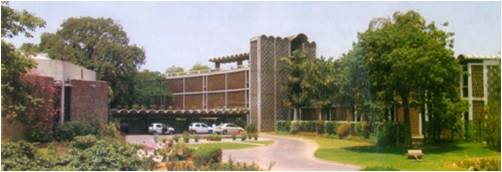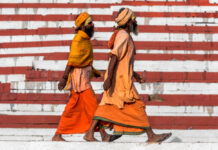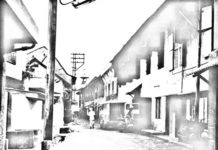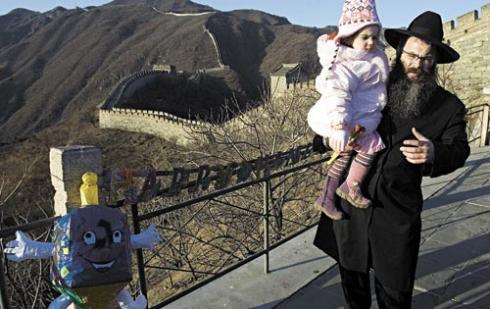In the background of a popular Israeli folk song Hava nagila (Let us rejoice), a group of Jewish men and women do the Hora dance somewhere in Gujarat, thousands of miles away from the land of their ancestors. One moment of this traditional dance is frozen in time as Hora Dancing, much like the movement of a young boy getting ready for his bar mitzvah (a coming of age Jewish ceremony). Through a photo exhibition titled “I am a Seed of the Tree…”, one gets an insider’s view into the lives of the Bene Jews in Ahmedabad, Gujarat. The community migrated to India centuries ago through Western Asia.
The 40 photographs on display at India International Centre, Lodhi Road, have been compiled by author Esther David and photographer Bindi Sheth. “When you see us on the streets in India, you can’t guess that we are Jews. But the moment the doors close, a transition takes place. The house suddenly becomes Jewish. But it’s not like we lead double lives,” says David, who has written extensively on Jews in India. It took her three years to prepare the exhibition. “We don’t make a noise about being Jews. But as times change, our community has become more open about our traditions,” she adds. Her work on the Jewish ethos in India has been translated into French, Gujarati and Marathi. David also won the Sahitya Akademi Award in 2010 for Book of Rachel , her work on Bene Israel. Originally from Ahmedabad, David spent time tracing her roots in the coastal town of Alibaug in Maharashtra. A shipwreck led the Bene Jews here. Their story is more than 2,000 years old, and despite decades of being here, the customs and traditions of the 150 Jews of Ahmedabad still flourish, with an Indian flavour.
David wanted Sheth to capture this community because she “wanted the project to be seen from the eyes of a non-Jew”. Sheth, who trained under architect-photographer Dinesh Mehta, shares how there were times when she couldn’t spot anything Jewish, and there were times when it was all Jewish. “During weddings, they apply mehendi (henna) to a groom’s fingers. Mehendi is essentially Indian, but that doesn’t happen in most Hindu weddings. In Rajasthan, however, they do apply henna on the groom’s palms. So it’s rather surprising to see the borrowed influences from here and there,” elaborates Sheth. “They wear the mangalsutra, and a green bangle, that’s all Indian. But then there are the Hebrew prayers, bar mitzvahs and the Yom Kippur (the holiest day in the Jewish calendar),” she adds.
Sheth’s lens has also captured the Yom Kippur, an occasion when women aren’t allowed to enter the synagogue. “It’s because I could not enter that I got great shots of the event. One must always make use of the constraints,” she says, as she talks about the picture of the synagogue draped in white. While a plate full of crunchy coconut-filled Kippur Chi Poorie, a Jewish delicacy and a Malida platter laden with fruits give an insight into the sweets and savouries popular in the community, Sheth’s pictures of the old and the new graveyard, many of whose headstones bear the Star of David, are also reminders of the shrinking numbers of Jews in India. Out of about 4,000 Jews in India, about 50 families are in Gujarat.
David explains that she never had a religious upbringing, so until the age of 40 she hadn’t really given much thought to her roots. It was only after she turned 40 that she began going through an identity crisis, of being a Jew in India. “The conflict in me became even more evident during times of celebrations and festivals. I was never truly a part of Indian festivals, and I didn’t know what to do during Jewish ones,” explains David. And it was this process of conflict resolution which steered David towards documenting as much of her community as possible.
To see the original source and author of this please go to this URL: http://www.indianexpress.com/news/something-like-home/1197463/1





